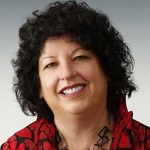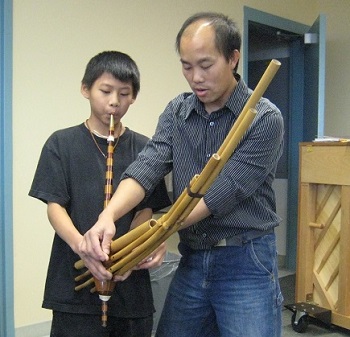 Diane Kaplan, Rasmuson Foundation
Diane Kaplan, Rasmuson Foundation
Title: President & CEO
Geographic scope: Alaska
2015 arts funding: $14.5M
Staffing: 19 FTE
How has your career prepared you for your current role?
I spent the early part of my career in public radio. At WXPN in Philadelphia in the '70s, we were creating programming in all the musical genres: rock, jazz, folk and traditional, world music before it was called world music, 20th century classical music, but also programming in feminism, LGBT issues and politics. At KALX in Berkeley, I inherited a broadcast team that was devoid of diversity and began the process of opening access to a variety of voices. Upon moving to Alaska in 1983, I became an advocate for supporting Native American programming and local broadcast services.
What are the most important arts and culture challenges you see in your geographic funding area?
Financial support for arts and artists: Alaska is experiencing significant financial challenges. On a $5 billion budget, Alaska has a $4 billion deficit. To close this gap, the legislature is discussing making deep cuts as well as instituting income and sales taxes. Some elected officials support using state funds only for programs and services mandated by Alaska's constitution. With these changes in our economy, we are seeing reductions in the workforce related to oil and gas and supporting industries. This results in fewer patrons of the arts and less financial support for the arts sector from corporate sources. Corporate support for the arts has dried up almost completely.
Alaska is an expansive state, geographically and culturally; three Anchorage census tracts are the most diverse in the country. We are challenged to connect our most remote communities with arts opportunities and programming. When we talk with arts and culture leaders, we hear a consistent concern about supporting arts experiences for youth in school and community. The promise of sustaining the diverse cultures in our state relies heavily on how we keep youth connected with cultural leaders and elders.
What are your core strategies for funding arts and culture?

musical instruments from different cultures.
Rasmuson Foundation supports the arts in a variety of ways. One consistently-held value is our commitment to individual artists. Our Individual Artist Awards provide money in support to several dozen artists annually for activities that help them grow and sustain their craft. Our Artist Residency Program supports eight-week residencies for Alaska artists at Lower 48 organizations and welcomes accomplished artists to Alaska organizations, allowing for an exchange of ideas and varied arts practice. Through a significant partnership with the Alaska State Council on the Arts, we direct support to performing and visual arts touring statewide, along with a robust Arts in Education program that makes grants available to schools and teachers to increase exposure to arts for our youth. Our Art Acquisition Fund provides support to museums and cultural centers with formal collections programs to purchase art from practicing Alaskan artists for permanent collections. Our New Pathways program, which is comprised of a partnership between The Foraker Group, our state nonprofit association, and EmcArts, a national leader in organization development, is designed to support arts organizations across the state to remain healthy and resilient, and to maximize the delivery of public impact and value.
We also believe in keeping Alaska connected within the national context. We support this through funding partnerships with United States Artists and ArtPlace America, directed at identifying Alaska artists whose practice is worthy of national recognition and support through the USA Fellows program. A total of 12 Alaska artists have achieved this recognition since we began in 2005. In 2011, we joined ArtPlace as an early funder, also with the goal of supporting Alaska-based programs that promote community advancement through creative placemaking. This support has resulted in 11 ArtPlace projects in Alaska that have stimulated a whole new field of placemaking within our state.
With equity in grantmaking as context, how are you working to support more diverse arts and culture organizations?
We do this in a couple of ways. Most importantly, we have diversity on our board of directors, our staff and on all of the panels where competitive grants are made. We work with diverse organizations to identify artists in their communities. As an example, through the nonprofit group that focuses on refugee resettlement in Alaska, we were able to connect with an Iraqi sculptor and help him to apply for a grant. We also host in-person workshops across the state so people feel comfortable approaching us.

In 2017, we will launch a pilot program to direct funding to grassroots cultural organizations interested in connecting youth to their respective cultures. This program is still in development. We are excited about how this program might unfold to be more impactful through an equity lens.
Very recently, we launched a new project to examine our foundation's connections to cultural communities in Alaska’s largest city, Anchorage. We have begun more direct engagement with cultural leaders in immigrant communities and are seeking ways to improve our communications to be more adaptive to unique languages and traditional cultural practices.
Finally, we have been actively engaged in supporting Kelsey Potdevin, our graduate fellow, through Philanthropy Northwest's Momentum Fellowship. We believe this program helps cultivate new leaders in the philanthropic sector with a keen eye on expanding culturally competent grantmaking and nonprofit practice.
What’s been a big success in the arts and culture space for your organization?
We’ve been providing grants to Individual Artists for 12 years. We received more applications this year than ever before. We are currently conducting our first in-depth review of the program, seeking input from everyone who has ever applied for an award. While the results of the evaluation are pending, we hope to gain information that will help us meet the changing needs of the arts community.
Our investments in ArtPlace America have also yielded much increased interest among the economic and community development agencies within the state, and have leveraged national foundation investments. The Anchorage Economic Development Corporation has included “creative placemaking” as one of six core development strategies for the city. Cook Inlet Housing Authority was recently named as one of six agencies from across the country to receive a three-year, $3 million grant as part of the ArtPlace Community Development Initiative.
What’s the biggest arts and culture opportunity or challenge your organization is tackling right now?
We still struggle with how to make sure all Alaskan artists know we are an available resource. We recognize there are barriers to applying: language, technology, writing. But even if we do reach these artists, we have limited resources in helping them to access our various funding programs. Private philanthropy in Alaska is limited. We continue to direct support toward “building a culture of philanthropy” in Alaska. We have been actively supporting the development of community foundation affiliates across the state. We have also worked hard to educate Alaskans about the value of philanthropy and have promoted a large scale campaign for residents to make direct financial contributions to nonprofits from funds they receive through the Alaska Permanent Fund Dividend. We believe all of these efforts combined can create more financial opportunities for arts nonprofits. But individual giving to the arts in Alaska is lethargic. New strategies to engage a new generation of arts donors are needed.
What’s one more question we should ask you, and how would you answer it?
Q. What’s the cultural life of Rasmuson Foundation itself?
A. We are a very creative and fun-loving group. Frequently, if a board member leaves us or a long-time staff member transitions, they may be gifted with a song or poem memorializing their participation with us. We love to sing and dance together. The walls of our office are covered in art by living Alaska artists on loan from various museums across the state. We love working in a “museum."
Diane Kaplan is president and CEO of Rasmuson Foundation, joining us this month for our virtual roundtable with arts funders.